Asclepius
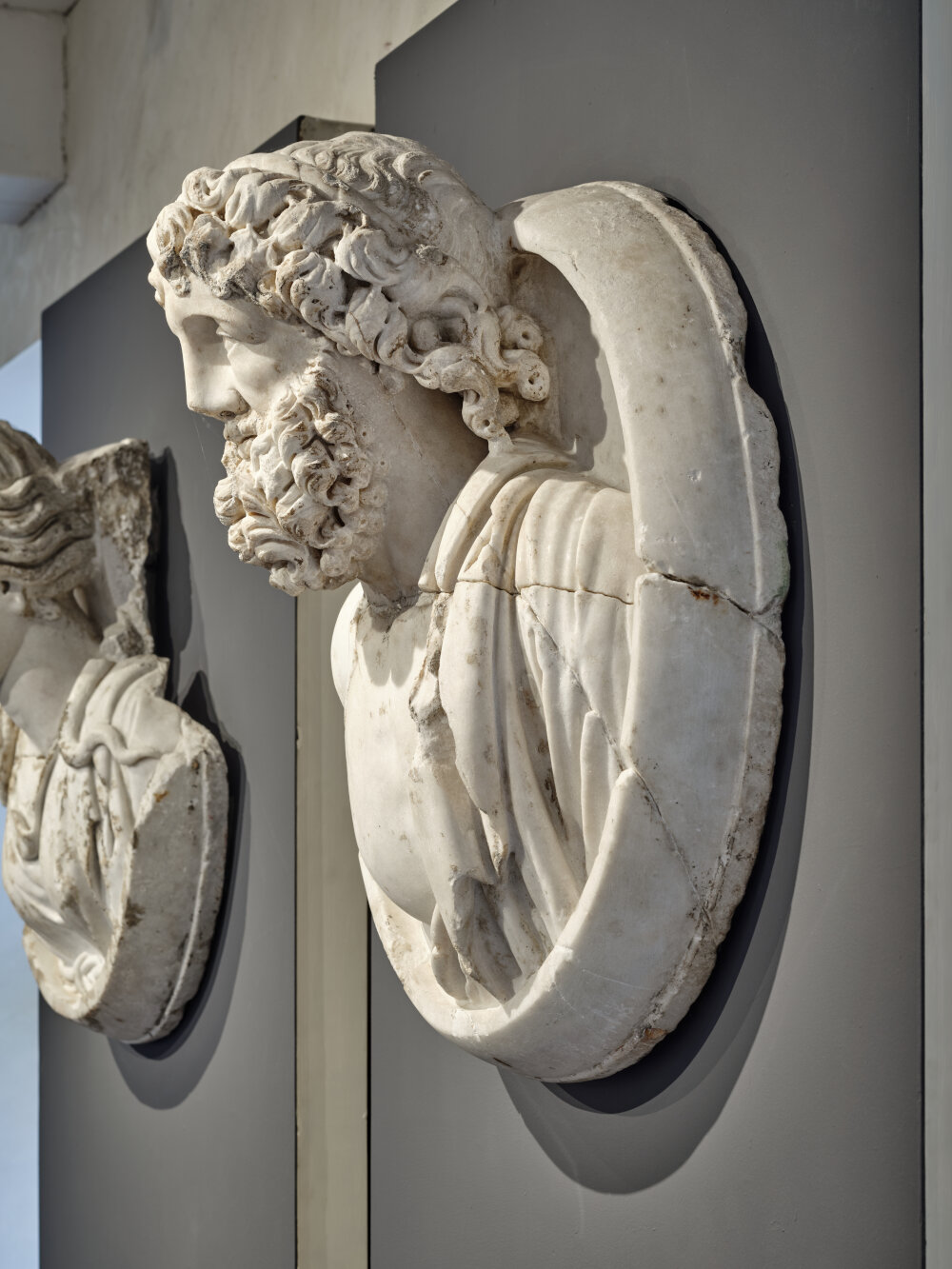
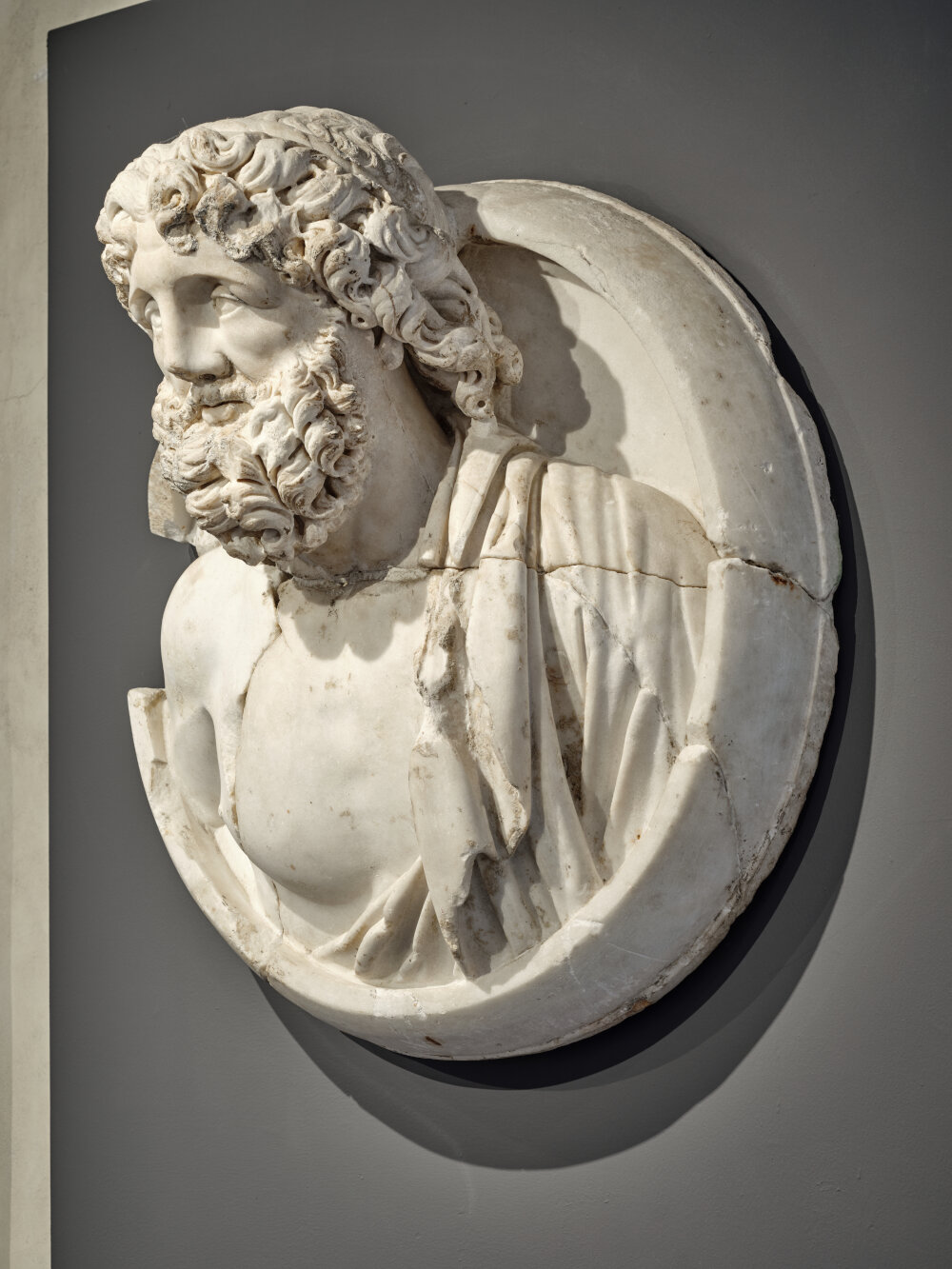
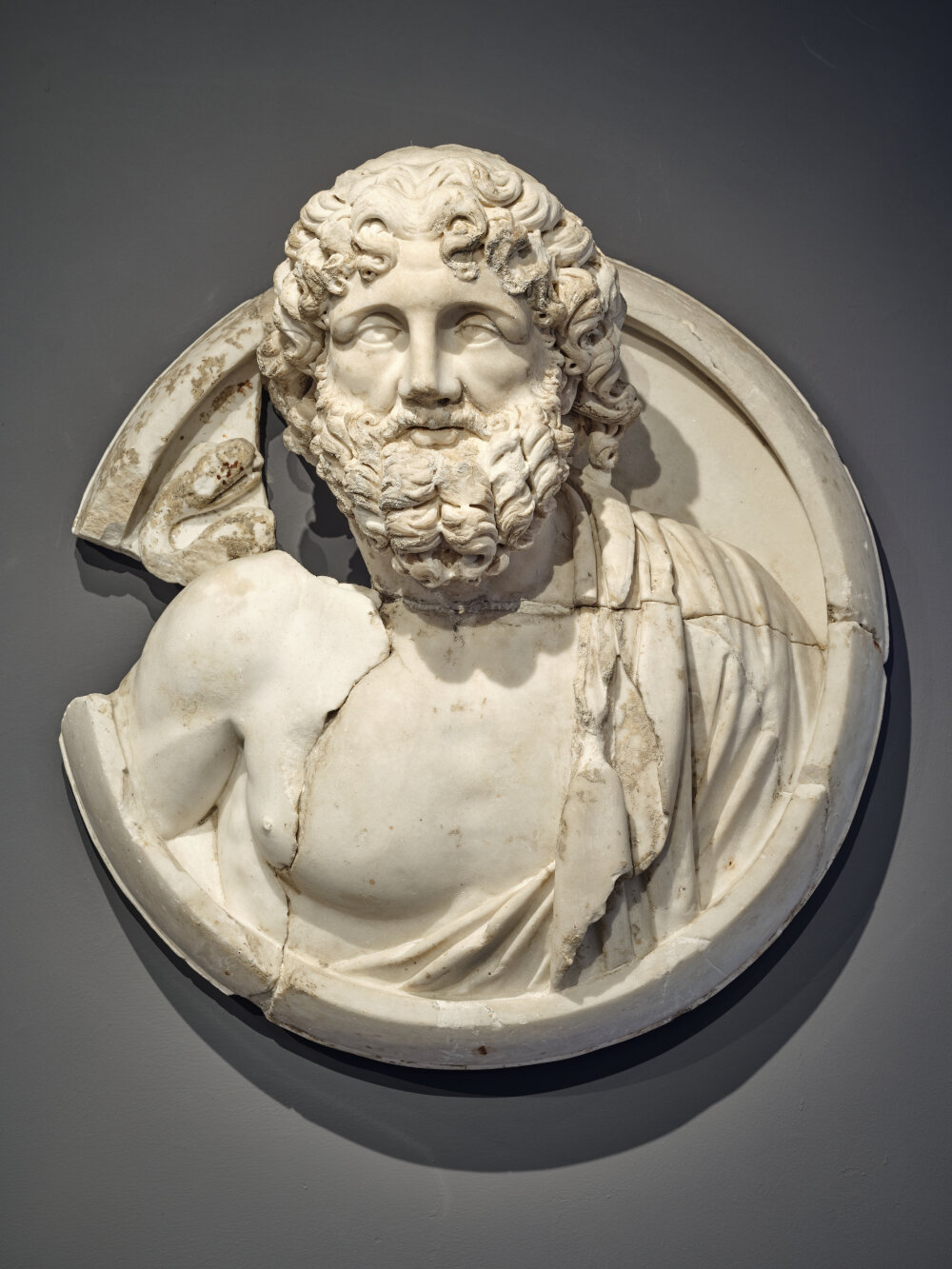
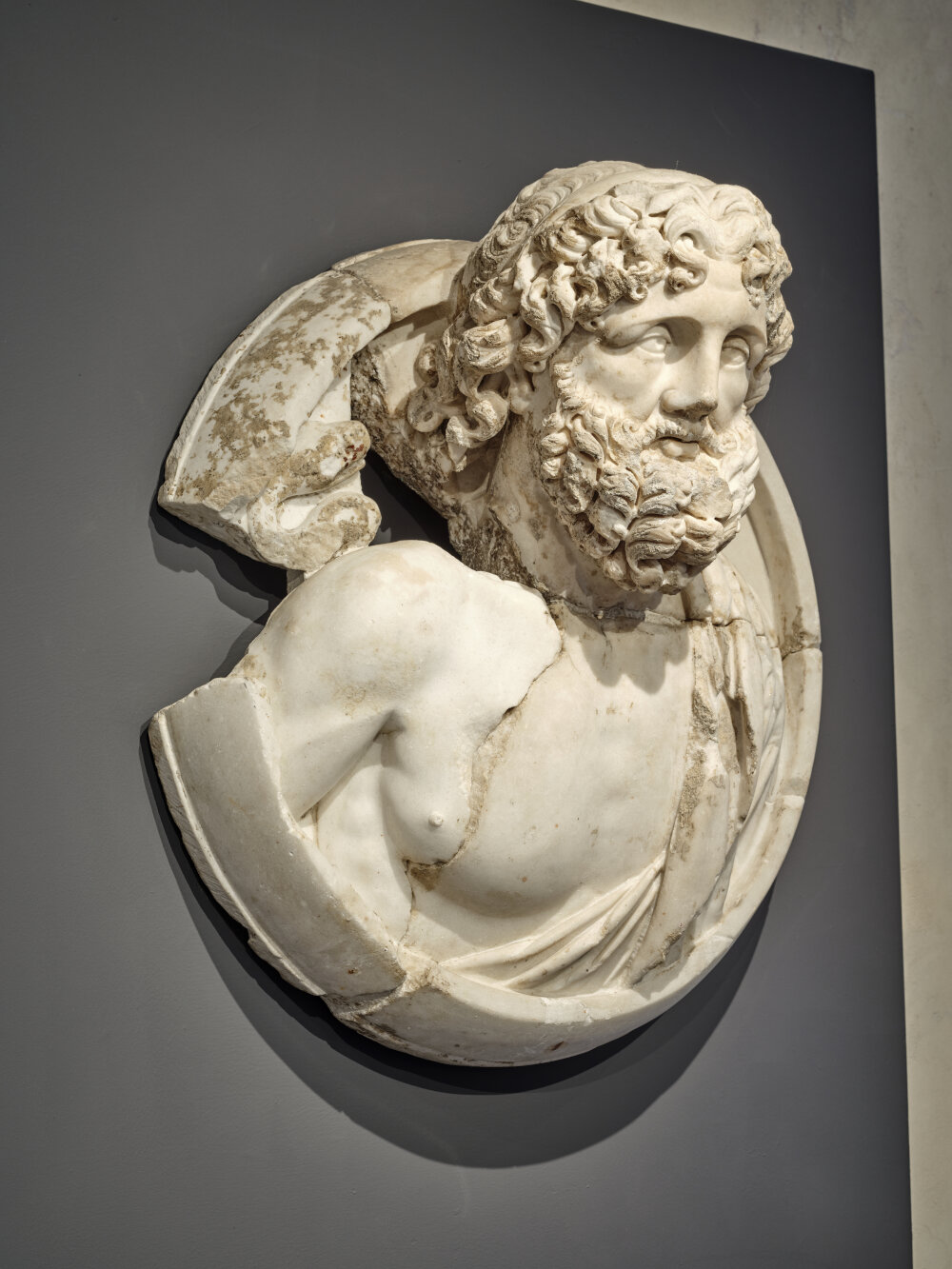
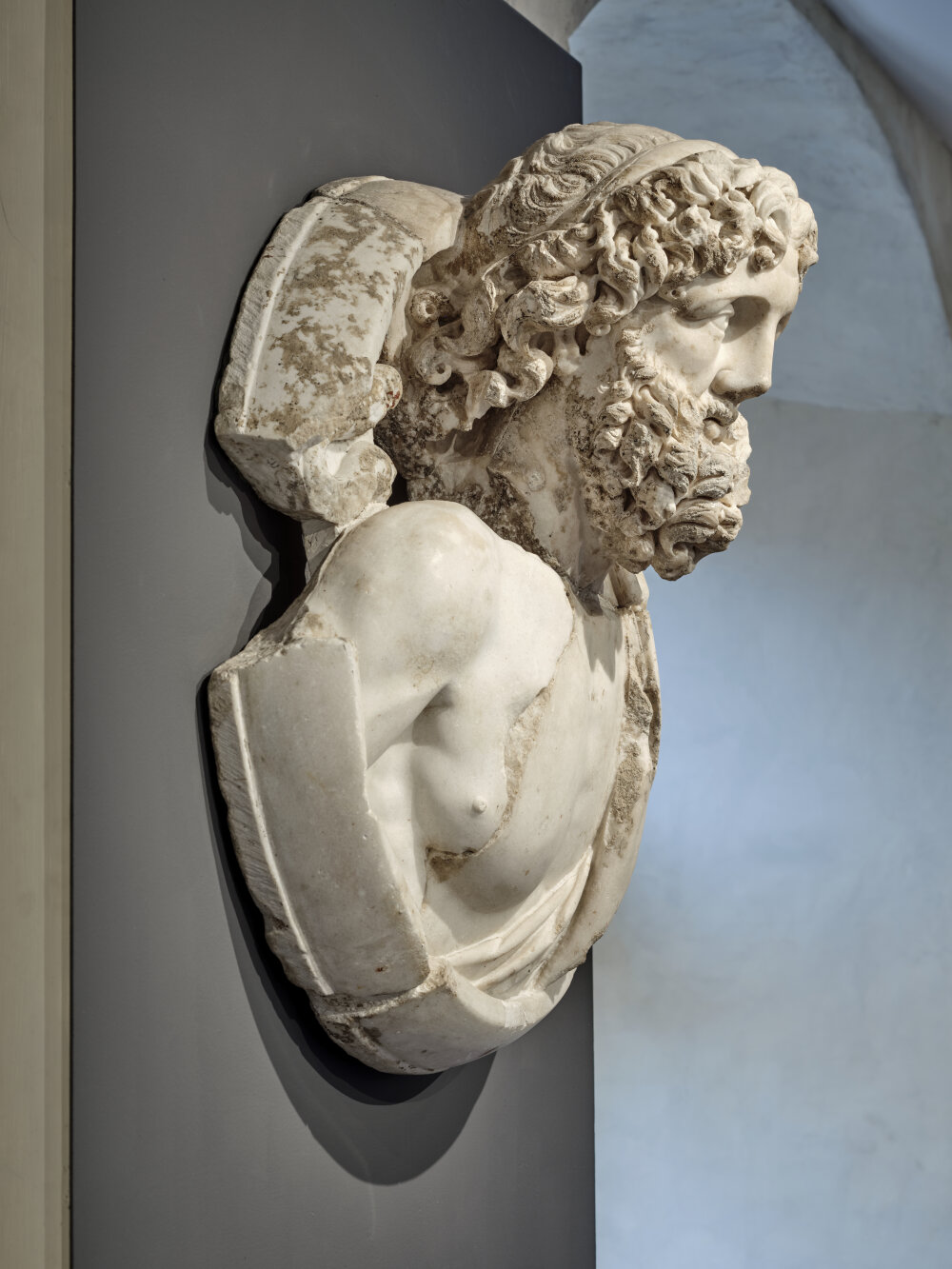
- Date de création
- End of the 3rd century
- Material
- Saint-Béat marble (Haute-Garonne)
- Dimensions
- H. 78 x l. 75 x P. 38 (cm)
- Inventory number
- Ra 34 m
- Photo credits
- Daniel Martin
Asclepius, or Hepius, was the god of medicine who relieved suffering and raised the dead. The serpent carved above his right shoulder is his attribute; it refers to beneficial forces, and its moult embodies its eternal rebirth. Sometimes depicted coiled around a stick, this symbol is now the emblem of medical professions.
Asclepius’s prominent eyes, partly covered by wide drooping upper eyelids, are crowned by sharply angled eyebrows. Above his forehead, two large, sinuous and perfectly symmetrical, S-shaped curls are arranged on either side of a centre parting. Long and generous curls cover his ears and hang down at the nape of his neck. His beard is fuller still. Vertically and very deeply divided by trepan ridges, the rolls of hair have been divided horizontally with a chisel, and end in the front in two spirals which have been made to intertwine at Adam’s apple level. Other medallions depicting male deities have been treated in a similar fashion. This is a characteristic feature of the work carried out by the workshop entrusted with this prestigious commission.
Asclepius was already present in Chiragan in the form of a statuette that predates by at least two centuries the creation of the group of divine effigies on medallions. Thus the gods of salvation, Dionysus, Isis, Serapis, Hygieiea and Asclepius, all of whom are responsible for the survival of human beings on earth and in the afterlife, constitute a particularly large proportion of the gods found at the villa.
P. Capus
Bibliography
- Landes 1992 C. Landes (ed.), Dieux guérisseurs en Gaule romaine. Exhibition, Musée archéologique Henri Prades, Lattes, 1992, Lattes. no 3
- Beckmann 2020 S.E. Beckmann, « The Idiom of Urban Display: Architectural Relief Sculpture in the Late Roman Villa of Chiragan (Haute-Garonne), » American Journal of Archaeology, 124, 1, pp. 133–160. p. 139
- Cazes et al. 1999 D. Cazes, E. Ugaglia, V. Geneviève, L. Mouysset, J.-C. Arramond, Q. Cazes, Le Musée Saint-Raymond : musée des Antiques de Toulouse, Toulouse-Paris. p. 84
- Du Mège 1835 A. Du Mège, Description du musée des Antiques de Toulouse, Toulouse. no 152
- Du Mège 1828 A. Du Mège, Notice des monumens antiques et des objets de sculpture moderne conservés dans le musée de Toulouse, Toulouse. no 65
- Espérandieu 1908 É. Espérandieu, Recueil général des bas-reliefs de la Gaule romaine, 2. Aquitaine, Paris. p. 33, no 892, fig. 12
- Joulin 1901 L. Joulin, Les établissements gallo-romains de la plaine de Martres-Tolosane, Paris. fig. 56 B
- Long 1987 C.R. Long, The Twelve Gods of Greece and Rome, Leiden-NewYork-Copenhagen. p. 10, 285-286
- Pierron 1992 J. Pierron, « Médaillons représentant Hygie et Esculape, » Le Jardin des Antiques. Bulletin des Amis du Musée Saint-Raymond, October, pp. 5–6.
- Rachou 1912 H. Rachou, Catalogue des collections de sculpture et d’épigraphie du musée de Toulouse, Toulouse. no 34 m
- Roschach 1892 E. Roschach, Catalogue des musées archéologiques de la ville de Toulouse : Musée des Augustins, Musée Saint-Raymond, Toulouse. no 34 a
- Centro de Exposiciones Arte Canal 2007 Centro de Exposiciones Arte Canal, Roma S.P.Q.R : Senatus Populus Que Romanus. Exhibition Centro de Exposiciones Arte Canal, Madrid, 20 november 2007 - 2 march 2008, Madrid. p. 150, no 82
- Musée Saint-Raymond 2011 Musée Saint-Raymond, L’essentiel des collections (Les guides du MSR), Toulouse. p. 26-27
To cite this notice
Capus P., "Asclepius", in The sculptures of the roman villa of Chiragan, Toulouse, 2019, online <https://villachiragan.saintraymond.toulouse.fr/en/ark:/87276/a_ra_34_m>.